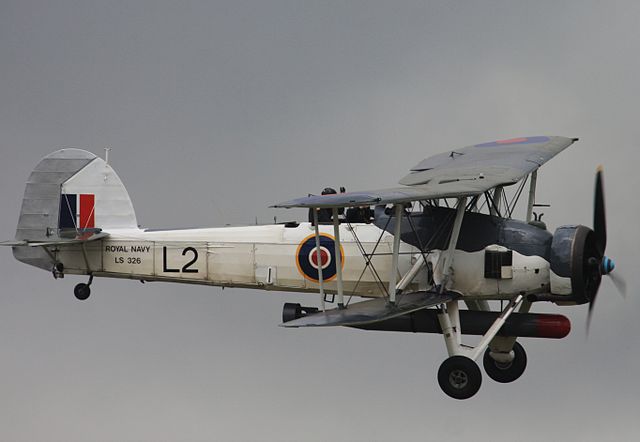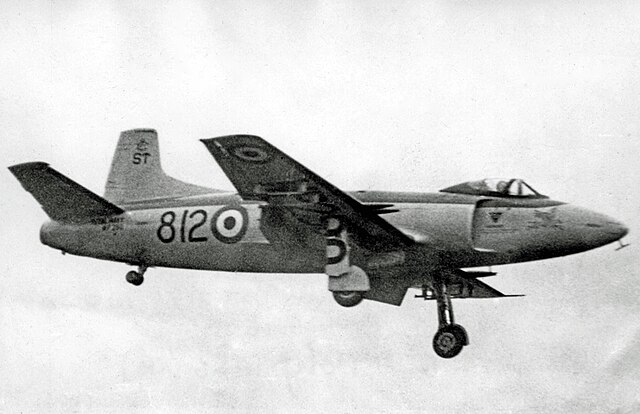731 Naval Air Squadron was a Naval Air Squadron of the Royal Navy's Fleet Air Arm (FAA). It was active between 1943 and 1945 and its sole role throughout its formation was a Deck Landing Control Officer training squadron. Through this role the squadron pilots were nicknamed 'Clockwork Mice'. It was based out of the purpose built airbase, commissioned as HMS Peewit, known as Royal Naval Air Station East Haven, in Scotland, as part of the Deck Landing Training School there.
731 NAS badge
Hawker Sea Hurricane Ib 'Z7015 - 7-L' (G-BKTH). Example of aircraft used by 731 NAS
Royal Navy officers 'aboard' 'HMS SPURIOUS MARK II' - a bus converted to resemble the island of an aircraft carrier. The bus is being driven along a runway or taxi way at Royal Naval Air Station East Haven at Carnoustie, Scotland.
LS326 Fairey Swordfish Mk2 Royal Navy Fleet Air Arm of the type used by 731 NAS throughout its existence
767 Naval Air Squadron was a Naval Air Squadron of the Royal Navy's Fleet Air Arm. It was initially formed as a Deck Landing Training Squadron in 1939, when 811 Naval Air Squadron was renumbered 767 Naval Air Squadron, at HMS Merlin, RNAS Donibristle. A detachment went to Hyeres de la Palyvestre in the south of France, enabling training in fairer conditions. While here, the squadron took on an operational mission, with a bombing attack on the Italian port of Genoa. With the fall of France the squadron evacuated to Algeria, where it split. Part went to Malta, forming 830 Naval Air Squadron, the other part to HMS Ark Royal, with personnel returning to the UK via Gibraltar. The squadron regrouped at HMS Condor, RNAS Arbroath, and moved to the Deck Landing School at HMS Peewit at RNAS East Haven in 1943.
Phantom FG.1 of 767 Naval Air Squadron parked
Fairey Swordfish I 'W5856-4A', an example of the aircraft used by 767 NAS
Hawker Sea Fury FB.11, the type used by 767 NAS for DLCO training
Supermarine Attcker FB.2, WP290, ST812, in 1831 NAS markings landing at RNAS Stretton, the type used by 767 NAS at Stretton








